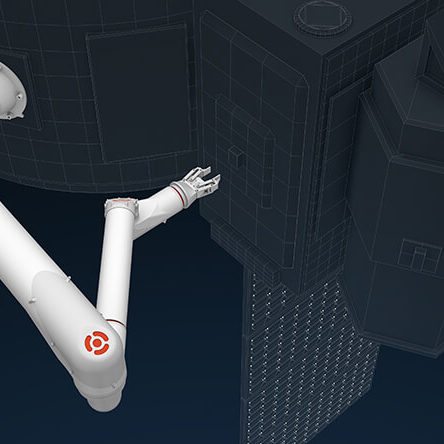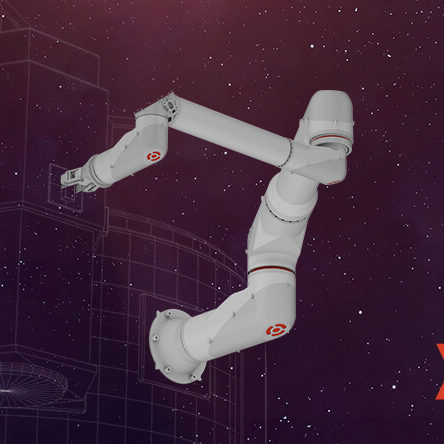A Robot on Every Mission: The Path To and Future of the xLink
Since the launch of the National Aeronautics and Space Act in 1958, the space industry has been largely dominated by government projects with government sized budgets. With the recent arrival and initial success of several “new space” companies, and with NASA’s official shift to relying on commercial providers, this is starting to shift. More commercial space companies are popping up with eager investors following close behind.
These startups are high-risk thanks to big visions that cannot always be supported by existing technologies. At Motiv Space Systems in Pasadena, CA, we’ve been following a unique path and leveraging our experience in space robotics to “build tools that enable these visionary ideas to succeed” – starting with the xLink™, our modular robotic manipulation system.
Using the Building Block Approach
To understand the path we have taken to developing the xLink™, we have to first dive into our approach to building our business – the building block approach. Our CEO, Chris Thayer, defines the building block approach as establishing a business like you would a building – one brick at a time.
He encourages startups within the space industry to be efficient and intentional about the steps they are taking. Have each step be a springboard to take you to the next step. When we are looking at a new project, we ask ourselves if this project takes advantage of our core competencies and leads to our ultimate vision.
Some building block steps that we have used to build our business since starting up in 2014 include: a) licensing technology from places like Caltech or NASA to accelerate product research, b) using Internal Research and Development (IRAD) or Small Business Innovative Research (SBIR) funding to develop products that add to our portfolio, and d) slowly internally funding the development of great ideas to see if they pan out.
All Missions will be Robotic Missions
Currently, missions with robots included are designated as “robot missions” or “robotic missions,” as the robots typically are that mission’s purpose, e.g., the various Mars rover missions. To create a thriving commercial robotics industry, this needs to change. Robots need to develop a ubiquitous presence in space. This means changing the narrative in the industry from only having robotics if that is the mission’s purpose, to just having robotics as another tool in space.
To help facilitate this, at Motiv, we recognized that any commercial product needs to have specific attributes. The biggest one is the cost – it needs to be affordable for everyday commercial companies. We had a goal, which we met, of bringing the cost down an order of magnitude from current systems. Delivery times for the product also need to be brought down.
The product needs to be modular and adaptable to fit many different applications and missions. This must include reducing the number of modifications made to the spacecraft itself to accommodate the robotics. We want to make things easy for the customer.
From Custom Project to Commercial Product
The path to the xLink™ started when we began working on several hardware components, namely the robotic arm of the Mars 2020 Perseverance Rover. We had that same team use the research and lessons learned from the Perseverance robotic arm to develop a ground robot, called the RoboMantis™. While working on the RoboMantis™ line, we focused heavily on developing cost-efficient technologies.
We combined the elements and techniques gained from the Perseverance robotic arm with the cost-efficient technology developed for the RoboMantis™ and channeled both back into flight robotics to develop the xLink™.
The xLink™ is fully modular, scalable, and flexible, meaning it can take on several configurations to fit different missions, and it’s about 1/10th the cost of current systems. Chris likens the xLink™ to building with Legos – the pieces can be essentially snapped together in the right configuration. We estimate that a custom xLink™ can be ready to fly in 6 months, not several years. The system is designed to be obtainable by everyone – from researchers in a lab to long-duration use in space.
What Happens Next?
The future that we imagine for the xLink™ includes grabbing a small satellite and connecting it with the host spacecraft, on-orbit assembly and servicing of satellites or spacecraft, and helping with planetary exploration.
One of the struggles new space startups have is trying to develop new, innovative ideas without access to the right technology. With the xLink™ robotic arm, we hope to help new space startups reach their goals by making robotics capabilities cost-effective — enabling everyone to put robots where they need them in space.

